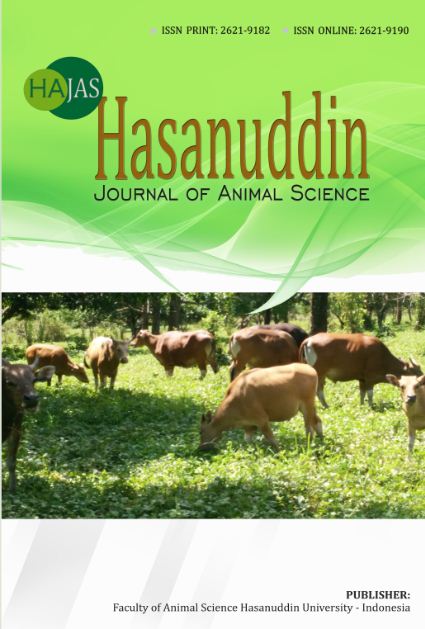Morphology Traits and Dry Matter Yield of Pennisetum purpureum Pakchong 1 Fertilized by Liquid Organic Fertilizer
Abstract
Forage must be available sustainably in both quality and quantity to support ruminant farming, so it requires soil that contains sufficient nutrients. This study aims to determine the growth, production, and quality of Pakchong elephant grass after being given liquid organic fertilizer in different doses. The experiment conducted in this study used a completely randomized design (CRD) with five treatments and five replications, namely P0 (No liquid organic fertilizer), P1 (Liquid organic fertilizer 40 liters/ha equivalent to 29 ml/plot), P2 (Liquid organic fertilizer 50 liters/ha equivalent to 36 ml/plot), P3 (Liquid organic fertilizer 60 liters/ha equivalent to 43 ml/plot), P4 (Liquid organic fertilizer 70 liters/ha equivalent to 50 ml/plot). The results showed that implementing various levels of liquid organic fertilizer positively impacted the growth of Pakchong elephant grass. In the parameters of plant growth, the best results were obtained in the P4 (70 l/ha) and P3 (60 l/ha) treatments compared to P0 (without fertilizer). Production of Pakchong elephant grass using liquid organic fertilizer in different doses obtained the best results on treatments P4 and P3. The provision of different doses did not significantly affect (p>0.01)the nutritional content of Pakchong grass.
Keywords: Organic liquid fertilizer, Pakchong, growth, production, quality
Downloads
Published
Issue
Section
License

This work is licensed under a Creative Commons Attribution-NonCommercial 4.0 International License.











